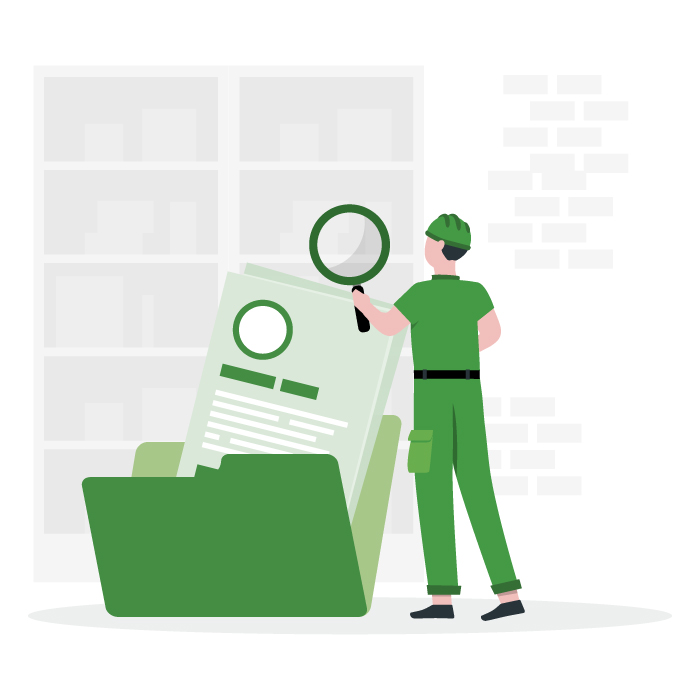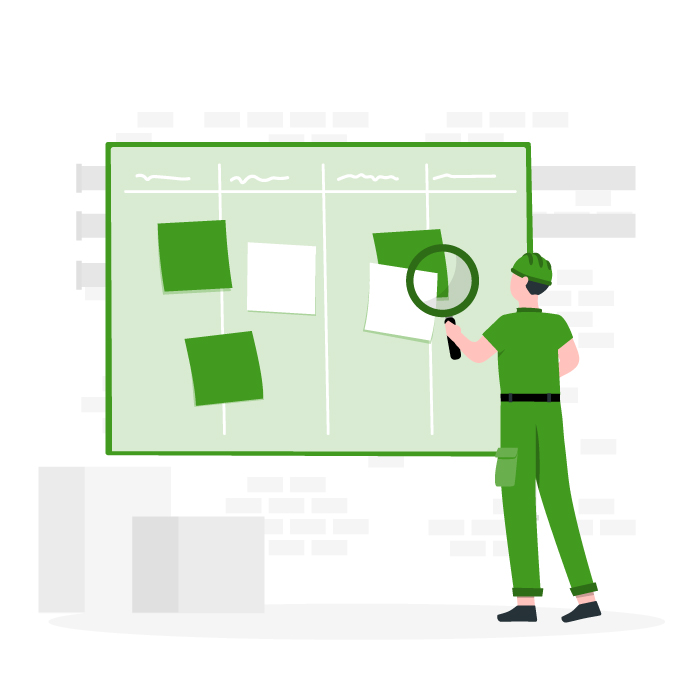Reactive Maintenance
Learn how reactive maintenance programs compare to more proactive strategies for asset management.
What is reactive maintenance?
Reactive maintenance is the simplest form of physical asset management where assets are run until they malfunction or completely break down. Then, and only then is maintenance performed on the machine to repair it. Reactive maintenance is also referred to as run-to-failure maintenance.
While other forms of maintenance focus on proactive methods to prevent breakdowns, reactive maintenance will always play an important role in any well-rounded maintenance plan.
Table of Contents
- Learn how reactive maintenance programs compare to more proactive strategies for asset management.
- What is reactive maintenance?
- Types of reactive maintenance
- Pros and cons of using reactive maintenance
- Reactive maintenance vs. proactive maintenance
- When is reactive maintenance enough?
- Reactive maintenance workflows
- Examples: reactive and proactive maintenance in action
- Get started with Limble
- Related Content
Types of reactive maintenance
Reactive maintenance activities can differ depending on how critical the affected equipment is.
- Emergency maintenance: A high-urgency response to equipment failure, this type of reactive maintenance helps keep your personnel safe, minimize downtime, and avoid additional damage to assets.
- Breakdown maintenance: Sometimes equipment failure doesn’t demand urgent attention. This type of reactive maintenance is any work performed on malfunctioning equipment, whether or not it constitutes an emergency repair. You might also plan for breakdown maintenance ahead of time based on data related to an asset’s performance and typical lifecycle.
- Corrective maintenance: You can plan and schedule corrective maintenance in the period between recognizing a performance issue and fixing it. Corrective measures help keep disruptions to a minimum by avoiding total equipment failure.
- Deferred corrective maintenance: This type of response involves recognizing a problem and scheduling maintenance for a future date. You might defer maintenance for non-critical components or as a result of resource constraints.
Pros and cons of using reactive maintenance
Just like any other approach to maintenance, reactive maintenance has its pros and cons. It is important to consider these when deciding when and how to include reactive maintenance in your strategy.
Advantages of reactive maintenance
The advantages of a reactive approach all lie in its simplicity and lack of up front maintenance costs or planning.
- Requires little to no planning of maintenance tasks or strategizing their priority.
- Less labor intensive than other approaches.
- Ensures that you only engage your maintenance team and its resources when they are actually needed.
- Initial costs are low due to the little planning required.
- Less need for organization and infrastructure to collect machine data.
Disadvantages of reactive maintenance
Reactive maintenance has its limitations, primarily due to the impact that unplanned downtime has on equipment, operations, and revenue.
- Reactive maintenance will cost more in the long term as the price of emergency repairs and unplanned downtime quickly adds up.
- Maintenance needs and resources are difficult to estimate when based on unpredictable equipment failures.
- Running equipment until it malfunctions can result in faster deterioration, causing more frequent asset replacement and shorter useful life.
- Unexpected equipment failure poses potential safety risks.
Reactive maintenance vs. proactive maintenance
How exactly do reactive and proactive maintenance programs differ? And is one better than the other?
Reactive maintenance means that maintenance is only performed after an issue or breakdown arises. It does not involve planning or scheduling work ahead of time which keeps things simple and cheap in the short term. However, it doesn’t do much to avoid breakdowns and the lost productive time that occurs while a repair is underway.
Proactive approaches like preventive and predictive maintenance on the other hand, use various methods to trigger maintenance activities meant to keep machines healthy and productive – and to prevent issues and breakdowns. Teams using a proactive maintenance approach use data, manufacturer recommendations, and other resources to plan and schedule routine inspections and equipment servicing.
Is proactive maintenance better than reactive maintenance?
The reality is that every organization requires a different mix of maintenance strategies based on their unique needs and operations. While proactive maintenance has its long-term advantages for asset-heavy or production-oriented organizations, no one is likely to get by without accounting for some reactive maintenance.
So each strategy may be better at doing different things. It all just depends on what your needs and focus are. But keep in mind that reactive maintenance is an inevitable part of any well-rounded maintenance strategy.
When is reactive maintenance enough?
Proactive maintenance programs are preferable to reactive programs in many circumstances. But is a fully reactive approach ever a good idea?
- Low-cost repairs: When regularly servicing a piece of equipment costs more than replacing it altogether, a reactive approach may be appropriate.
- Inessential equipment: Regular preventive maintenance doesn’t always make sense for non-critical components or assets. Take into account both the role the equipment plays in your production cycle as well as the potential cost of failure.
- Old equipment: Replacing assets after they fail may be the most cost-effective approach for equipment that’s nearing the end of its lifespan.
Experts suggest that businesses with asset management needs should aim to spend no more than 10% of their time on reactive tasks.
Reactive maintenance workflows
Just because reactive maintenance doesn’t involve the same planning as proactive strategies, it doesn’t mean that a little organization isn’t helpful. In fact, ensuring timely maintenance work in response to work requests and breakdowns can be complex.
It is critical to have a plan for how work will be assigned, resolved, and monitored for effectiveness. A basic work order process can help clear up questions and confusion when breakdowns happen. They ensure quick repairs that minimize the impact of downtime on your bottom line.
Examples: reactive and proactive maintenance in action
The most common example of reactive maintenance is the changing of a light bulb. Here are some other examples that contrast how reactive and proactive maintenance is applied in different situations.
Car maintenance
Reactive: Your car won’t start? Some reactive maintenance in the form of a battery replacement will help.
Proactive: Proactively maintaining your car’s health and performance involves regular oil checks and strict attention to routine maintenance.
Facilities management
Reactive: A purely reactive strategy would involve waiting until pipes have burst.
Proactive: You can proactively avoid burst pipes by following a plan throughout the winter months to ensure they maintain a suitable temperature.
Road work
Reactive: A reactive approach to road work would involve sending crews out to repair potholes, cracks, and other hazards.
Proactive: This may involve monitoring road conditions year-round to strategically schedule repaving.
Want to see Limble in action? Get started for free today!
Get started with Limble
CMMS software simplifies management of a reactive maintenance strategy by improving communication, access to maintenance history, prioritization of work orders, and more. Or, if you are making the transition from reactive to preventive maintenance, it can help streamline scheduling and coordination of PMs.
By centralizing all maintenance activities, platforms like Limble can help you:
- Automate task scheduling for preventive maintenance
- Promote process compliance with maintenance checklists
- Manage asset and spare parts inventories in real time
- Track and report on essential maintenance KPIs
If you’re interested in learning more about Limble CMMS, you can start a free 30-day trial here, request a demo, or even try out our online self-demo.


